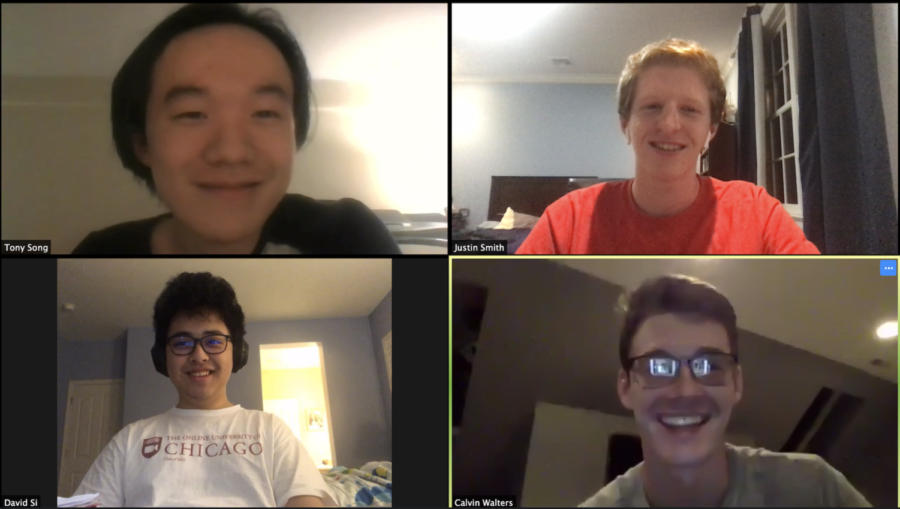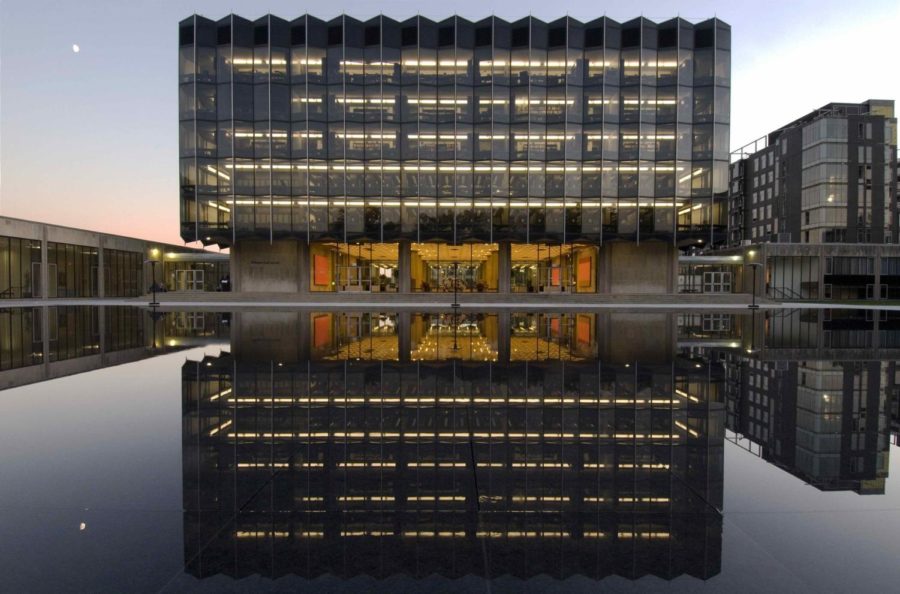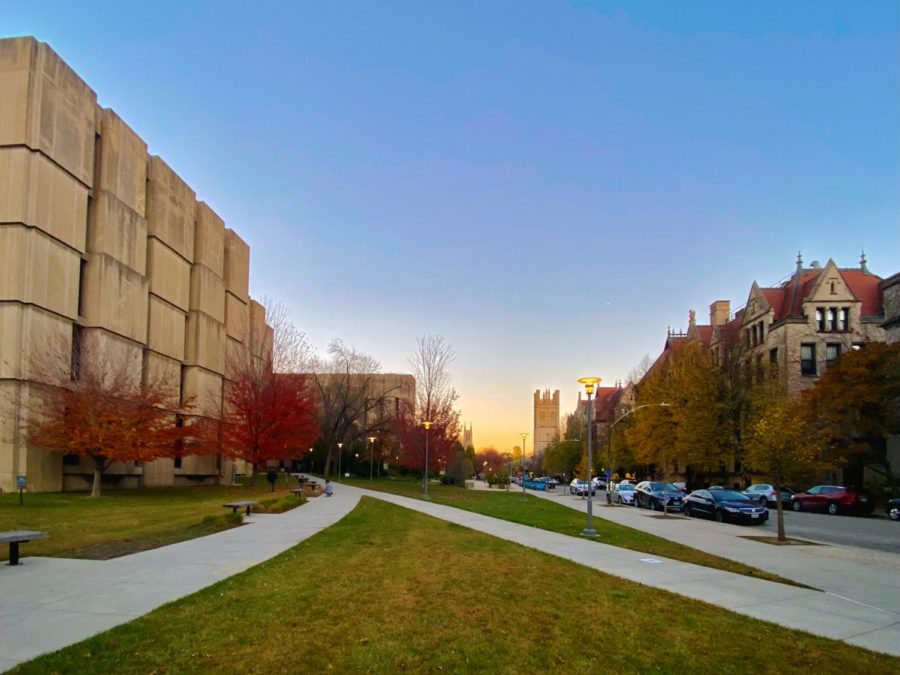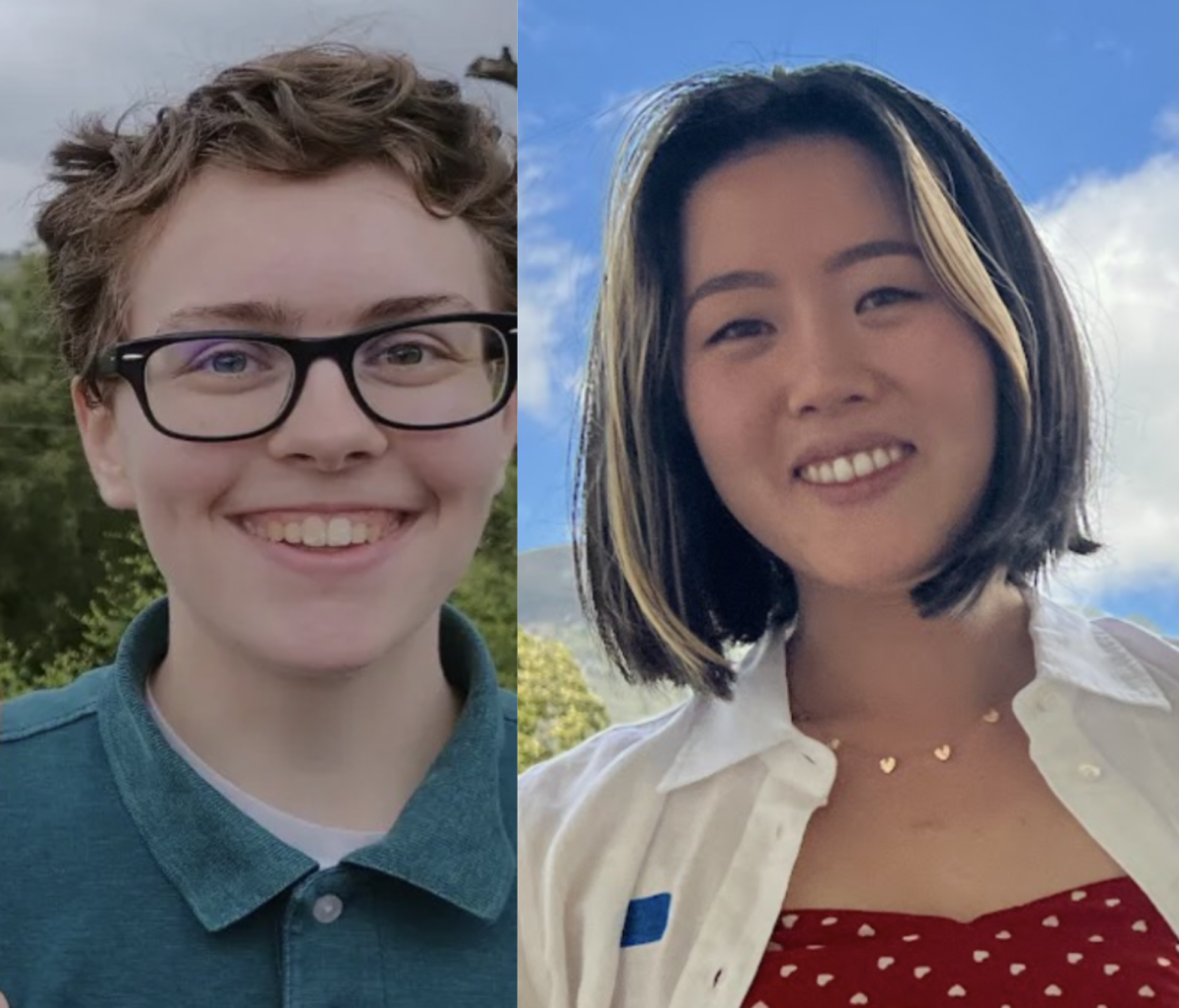Second years Justin Smith, Tony Song, Calvin Walters and first year David Si utilized their time during the COVID-19 pandemic to research behavioral trends in areas of daily life altered due to the pandemic.
Smith looked at behavior during the pandemic from a policy perspective, aiming to determine whether the institution of stay-at-home orders by state governments were effective at curbing mobility, the average distance individuals traveled, in the short run. As the US enters a new recession due to the pandemic, Song studied whether low-income American households donated a smaller percentage of their total annual income to charity after the 2008 recession as compared to the proportion donated before. Walters analyzed results from the NCAA tournament, cancelled due to the pandemic, to determine whether lowering the win probability threshold for selecting underdogs to advance in the NCAA Tournament, while raising the threshold for favorites, improves March Madness bracket performance. Si studied employment statistics in Santa Clara County during the pandemic, to determine the extent to which cases of the virus in a localized region contributed to unemployment.
Amidst historical increases in unemployment, the focus of Si’s study, people have been ordered to socially distance themselves and shelter-in-place. As a result, there have been drastic changes to mobility, a topic that is further explored in Smith’s study on the short term changes to mobility following shelter-in-place orders. Mobility is inherently tied to conversations about employment, as working from home or not working at all removes the reason for a weekday commute.
Continuing with the topic of social distancing, activities many would consider essential to their daily lives, such as eating at a restaurant, socializing at a cafe, or attending a live sports game, have been cancelled. One example is the NCAA Tournament and the March Madness bracket researched in Walters’ study.
Fluctuations in income are direct results of rising unemployment. The complete implications of how COVID-19 and its external economic shock have affected spending habits are unclear. However, Song’s research on changes to charitable giving before and after the 2008 recession provides an insightful parallel to answering the question of how exactly charitable giving changes.
Each study not only relates to the Socioeconomic effects of the COVID-19 pandemic, but also provides value to the wealth of academic knowledge in the field surrounding each study.
Smith’s study found that there is not a statistically significant positive relationship between the institution of a stay-at-home order and mobility data in the short run. This research provides strong evidence that stay-at-home orders are effective at curbing mobility, supporting the implementation of stay-at-home orders as a way to reduce COVID-19 spread, and eliminates stay-at-home orders as the driver of the spike in mobility seen throughout March 2020 providing a basis for future research on the topic.
Song’s study found that low-income American households changed their attitude and propensity to give after experiencing a major economic downturn, while high-income households exhibited consistent low-contribution donation patterns before and after the recession. The impact of COVID-19 on charitable giving is likely to be reminiscent of that in the aftermath of the 2008 recession. This research can serve as a reference for a variety of organizations, who now must prepare to see less donations in the coming months.
Walters’ study was able to improve upon an already viable model for game predictions in the NCAA Tournament. Among other findings, it found that the optimal classifying win probability threshold for 12-seeds in the Round of 64 to be 33%, 5-seeds in the Round of 32 to be 42.8%, and 8-seeds in the Round of 32 to be 17.8%. These results increased the original FiveThirtyEight model’s correct pick rate for the statistically significant qualified seeds by 2.9 percentage points. This research has the potential to benefit fans of the NCAA Tournament nationwide when the pandemic ends and teams are allowed to resume regular seasonal play.
Si’s study directly matters to the millions of citizens living or working in the three counties researched. Although much attention is currently directed towards researching COVID-19, relatively less analysis is available pertaining to specific counties. By expressing changes to county employment on a per COVID-19 case basis, Si’s study helps quantify economic trends and how they correlate to the severity of the outbreak. This also helps residents compare how greatly impacted their county’s employment is when compared to other counties.
Despite the value each study provides, each study is limited by the scope of its findings and the scope of its applications to life during and after the pandemic.
Both Smith and Si’s studies were limited in scope geographically. Smith’s study focused solely on the 10 states with the greatest number of COVID-19 cases, while Si’s study focused exclusively on Santa Clara and surrounding counties. They also each focus only on one aspect of the pandemic: Smith’s paper is only applicable to mobility data rather than confirmed cases of COVID-19, while Si’s paper is only applicable to employment statistics, not other indications of economic distress.
Primary limitations of Song’s study concern data-collection methods and the construct. The independent variable (family income) is a self-reported value, and further considerations with respect to the respondent’s property ownership or other assets were included. Hence the family income might not be an accurate representation of how wealthy a particular household is, in some cases. Additionally, the 200K cutoff that separates the “rich” from the “poor” does not take into account inflation between the years of interest.
Although Walters’ study was able to improve upon an already viable model for game predictions, it was not able to achieve significant results for many of its targets, largely due to sample size issues.
Finally, each researcher took time to reflect on the research process.
In reflection, Smith found the process taught him about the validity of results even when they go against initial claims. “When first beginning the research process I wanted to explore how we could learn from the shared tragedy we’re all living through, the COVID-19 pandemic, and improve our methods in the future. Initial challenges included finding prior literature from the pandemic due to its recency, and finding a way to make my research as useful and as broad in scope as possible without making the study too overwhelming to complete in such a short time frame. While my findings were not in line with my predictions, my study still shed light on the efficacy of a vital method used to reduce mobility and therefore the spread of COVID-19. I realized that the research process, even when it doesn’t go the way you predicted, results in meaningful findings that can explain or disprove policy proposals and help people make more informed decisions.”
Song realized that a simple solution is sometimes the best one. “I got to learn about the whole package for conducting research in the social sciences: from proposing a question suitable for quantitative research, to formulating reasonable hypotheses; and from running the appropriate statistical analysis, to making sensible interpretations of the results. One of the major challenges for me was figuring out the most optimal way for analyzing my data. It was tempting to use more sophisticated models, but I realized that the simple relationship between proportion of total income donated and family income must have an equally simple explanation. Hence, I was able to use two sample t-tests and linear regression comparisons to draw meaningful conclusions that scientists in the field might care about.”
Walters acknowledged the necessity of revision in the research process. “To begin the research process I was inspired and motivated to investigate a topic I am interested in. As the investigation went on, and I had to ensure that I was adhering to strict scientific procedures and was forced to adjust the scope of my study a few times, the process became a bit frustrating and tedious. Yet, I came to realize that this process is necessary for the creation of a meaningful product that has the ability to improve society, which makes up for the copious amount of thought and effort put into a research project like this.”
Si appreciates how far he’s come in the research process. “In reflecting on my research process, I realize that I have learned much about the steps to craft an academic, quantitative study. In particular, I now know how to comprehensively survey existing research, effectively structure a literature review, and purposefully decide on a research methodology, skills that I was entirely unfamiliar with prior to this course. Additionally, I have practiced tailoring my data interpretations and discussion to a study limited by the infrequent release of employment statistics which has made my sample sizes small and difficult to work with.”








